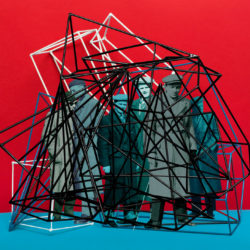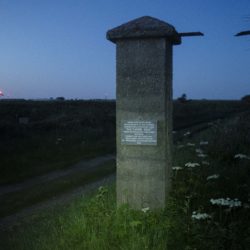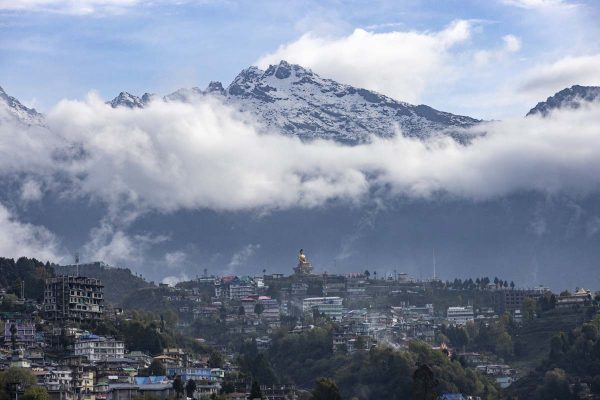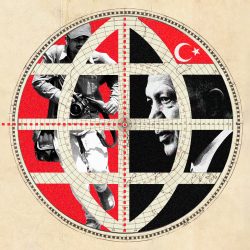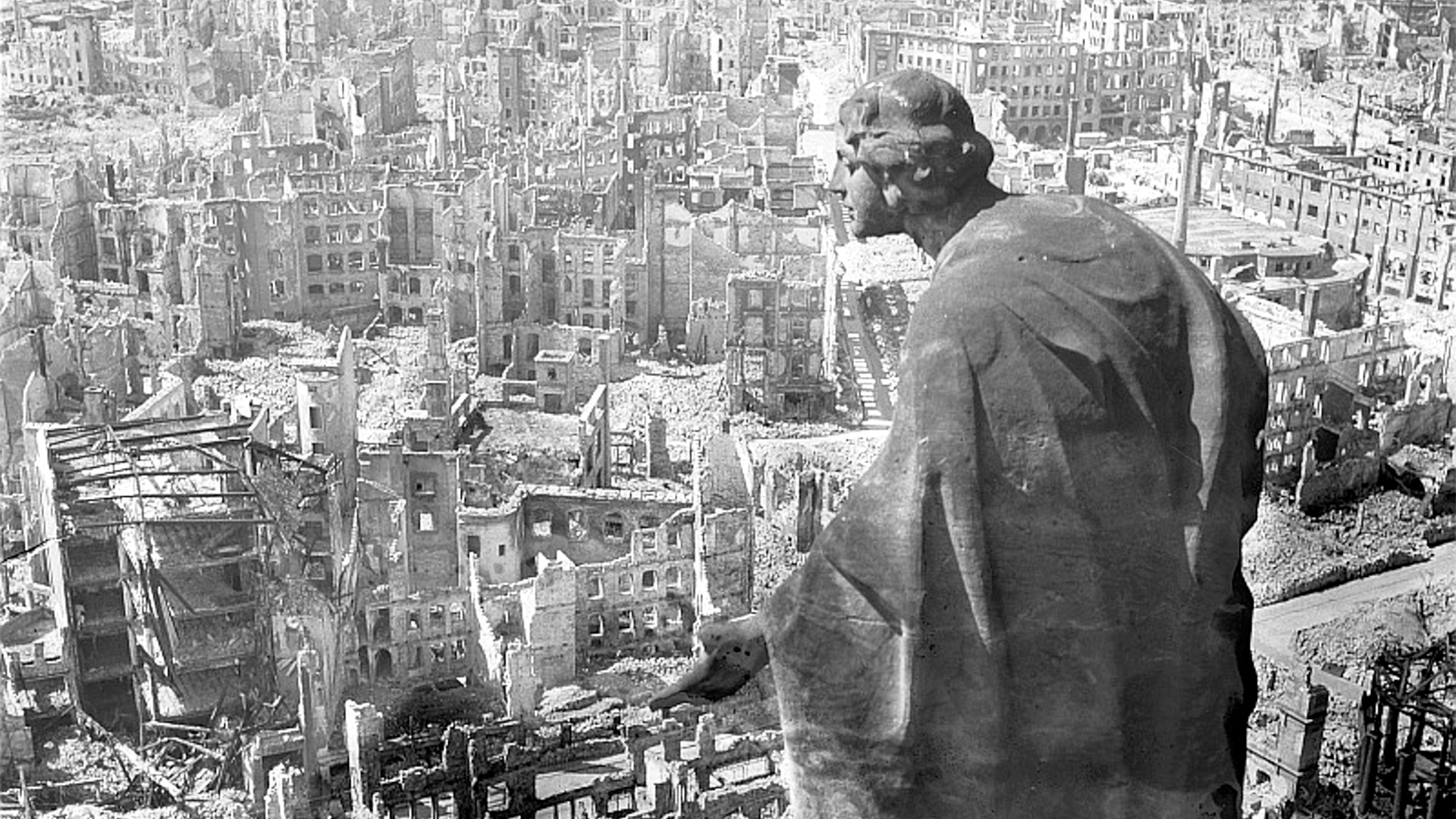
Creative Commons/Deutsche Fotothek/Richard Peter
Dresden doesn’t know how to mourn its past
On the night of February 13, 1945, Allied bombers began an aerial attack on the German city of Dresden. Over 2,400 tons of explosives were dropped, producing a massive firestorm that generated its own hurricane-force winds. Asphalt, glass and even brickwork were melted while those sheltering in cellars succumbed to heat and asphyxiation. Some 25,000 people died, by modern estimates, many of them civilians in a city known to house many refugees. The city’s beautiful Renaissance and baroque downtown — the Frauenkirche church, Brühl’s Terrace, King Augustus’ famous porcelain collection — was reduced to rubble within days.
In the English-speaking world, Dresden has become a symbol of moral ambivalence and the cost of war in general, most famously captured in Kurt Vonnegut’s novel, “Slaughterhouse-Five.” Arguments still continue, mainly among historians, about whether it was a necessary military action or a war crime motivated mainly by vengeance.
For Germans today, talking about Dresden has far more immediate political stakes. One of Germany’s proudest cultural achievements has been its very public process of “coming to terms with the past,” establishing a mainstream political and cultural consensus around collective responsibility for the legacy of Nazi crimes. Where does the bombing of Dresden — a moment of suffering that totally reshaped the city, both culturally and architecturally, and that lives on in many local families’ memories — fit into all that?
The far right has eagerly adopted the portrayal of Dresden as a senseless war crime, holding an annual “march of mourning.” They use the bombings to draw false equivalencies about the damage of World War II and to suggest that Germany’s apologetic and largely anti-nationalist memory culture has gone too far. More mainstream elements have tended to advocate either for the avoidance of the topic altogether or — as a compromise position — for a policy of dignified “silent commemoration,” hoping to reject any kind of politicization of the date. Left-wing and community organizations, meanwhile, have made a priority of interrupting far-right actions while arguing that any commemoration on February 13 should foreground Dresden’s own Nazi past and the dangers of fascist politics in general. Under public pressure, the city’s major religious institutions and municipal government have begun to move away from silent commemoration, opening up the city to a range of other memorial activities around the date.
Over the past 25 years, the anniversary of the bombings has become a passionately contested date, one that sees clashes in the media and in the streets as the whole city is turned into a chaotic public laboratory for memory culture. The question of how to talk about Dresden becomes a conversation about victimhood and complicity, apology and pride, pacifism and justice — and ultimately, too, about the identity of the city.
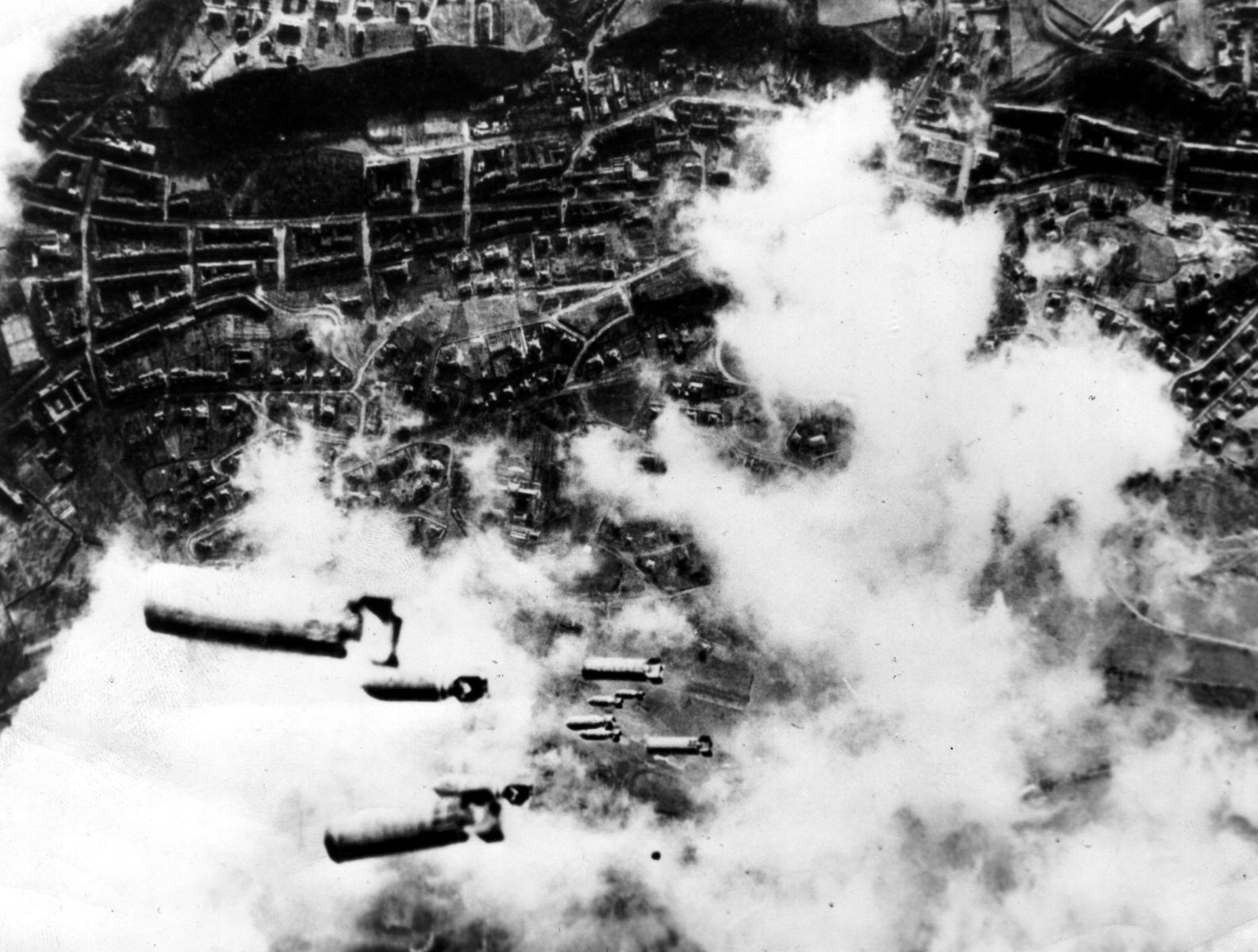
Dresden is a gorgeous, captivating, contradictory place. The capital of Saxony, Germany’s easternmost state, it was built up in elegant style from the 15th century onwards. Its reputation as a city of culture and beauty — praised by Goethe, painted by Canaletto, epitomized by the name “Elbflorenz” (Florence on the River Elbe) — was secured during the Baroque-era rule of Augustus the Strong. And, despite the many developments that have shaped the city since — the industrial revolution, Nazi rule, the Allied bombing and its aftermath, 40 odd years of the Communist German Democratic Republic — it is this period of Saxon prestige that Dresden turned to in the 1990s as it sought to rebuild its urban center. Now, thanks to phenomenally expensive renovations, visitors to Dresden can experience the architectural beauty of the original Elbflorenz, provided they do not venture too far from the city center.
For a long while, the bombings hardly featured in any national conversation. The GDR accused the Western Allies, their Cold War enemies at the time, of terror bombing innocents, cynically redeploying a narrative coined by the Nazis, although this remained a relatively minor element of East German national public history. West Germans, meanwhile, were more focused on either reviving their economy or, especially from the 1960s onwards, on acknowledging their own national guilt. How, if you are committed to accepting the collective responsibility of “coming to terms with the past,” can you account for your own suffering?
The answer has tended to be to not talk about it, a tactic that W.G. Sebald criticized as an “inability to mourn,” citing the lack of literature on Germany’s bombed-out cities like Dresden, Hamburg and Cologne. Yet this national silence, as Gunter Grass and others have warned, risks ceding the terrain of remembering German wartime suffering — not just the bombings but the atrocities committed by Allied and Red Army soldiers, among other things — to extremist right-wing elements.
“For the far right, Dresden is a symbol that can be used to support a different approach to memory about the Nazi past,” said Stephan Petzold, a lecturer in German history at Leeds University. “It’s part of an attempt to create an idea of Germans being not perpetrators but victims.” According to Petzold, far-right activists and politicians have been drawn to Dresden since the 1990s on account of its symbolic status as a German “victim city.” In doing so, they have capitalized on older mythologies of German victimhood, which flourished in postwar West Germany, in the GDR generally and among German families in private.
The annual far-right “march of mourning” has drawn openly militaristic groups like the neo-Nazi Kameradschaften networks as well as politicians from the extremist NPD party, which peaked in the 2000s before falling away. More recently, the Alternative for Germany, the far more professional far-right party that currently receives 28% of the vote in the Saxon parliament, also participated in the march. The anti-Islam Pegida movement and the Covid-skeptic Querdenker (“lateral thinker”) networks have also been present. These commemorations are openly provocative in a nation whose constitution forbids the relativization of Nazi crimes (one sign seen at the march last year read: “Bombenholocaust,” or bombing Holocaust). But they have never been banned by city or federal governments.
Commemorations grew in size over the 1990s and early 2000s but it was not until 2005, when the bombings’ 60th anniversary was marked by what was then the largest far-right rally in postwar Europe, that Dresdeners began to publicly rally in opposition.
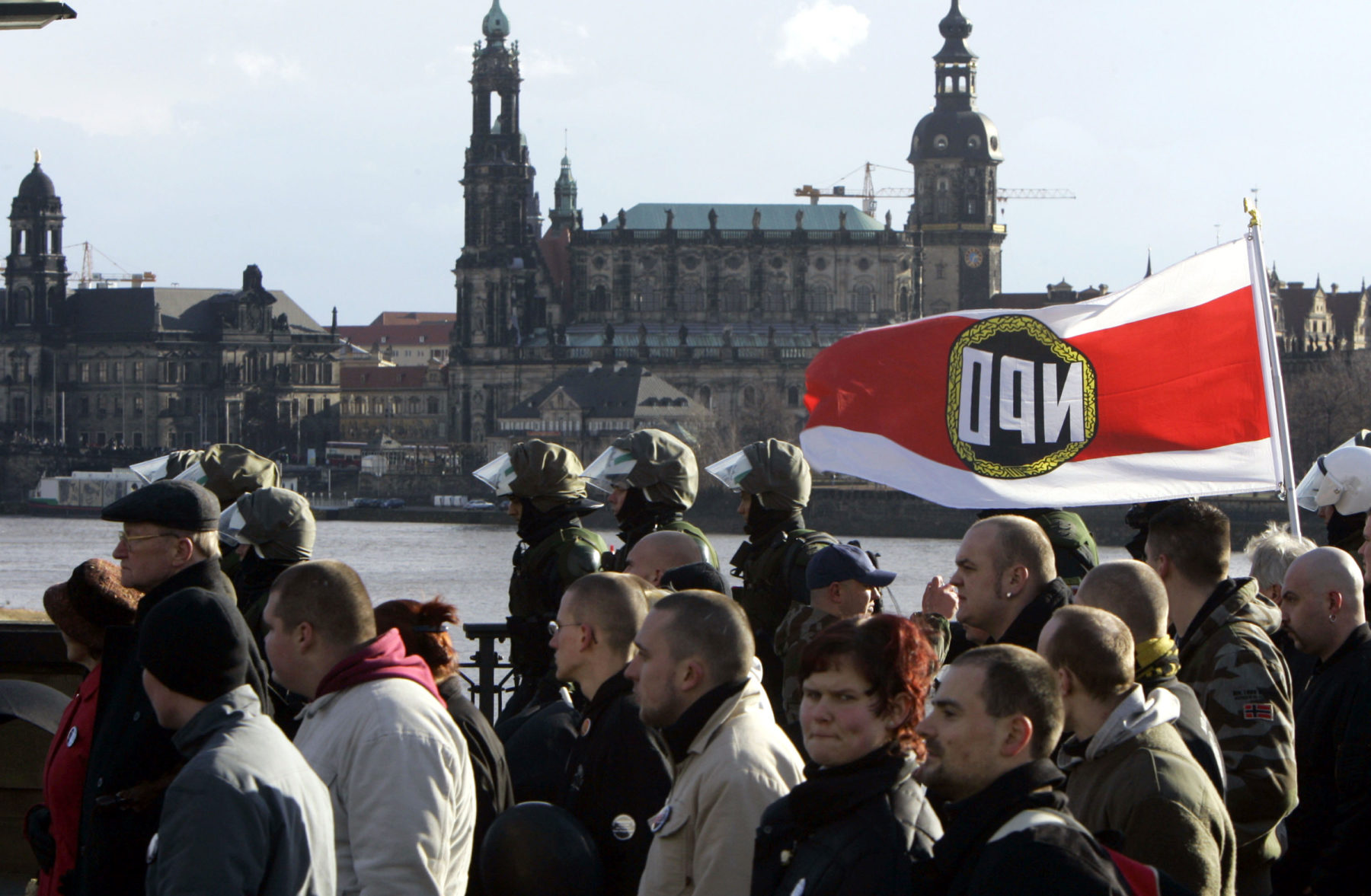
At that time, the municipal government policy had been the avowedly “apolitical” silent mourning, and anything else in the inner city was banned. Dresden’s conservative administration, Petzold said, attempted to position themselves between the far right and antifascists, suggesting that each side was politicizing the date for extremist purposes. Gradually, however, the city’s wreath-laying ceremony began attracting more far-right elements, so much so that the Jewish Community of Dresden decided to boycott the event. Leftist groups began trying to blockade far-right marches. Community organization campaigns pressured the city government to unambiguously resist far-right appropriation of the date and encourage an approach to memory culture that included perspectives from the victims of Nazi persecution and other marginalized groups.
What has resulted since is a wide array of often competing activities around February 13. One of the numerous city-sponsored events is a “human chain” of remembrance, which symbolically encircles the historic downtown as a statement against xenophobia and a gesture of protection against far-right incursion. Many left-wing and civil society groups have gone further, organizing further blockades and counter-protests against the far right in addition to commemorative events around local Jewish sites and attempts to publicly draw attention to the city’s Nazi past.
Petzold explained that Dresden’s historic downtown has become an important element of local memory politics. “The competition over space, over who gets to be visible in public space, is really key,” he said. Far-right groups “were being allowed to use iconic sites like the opera house to create good images of themselves, which also makes them appealing to the media. There’s an appropriation, perhaps, not only of that space but also of those iconic buildings, which have become enshrined in local Dresden identity.”
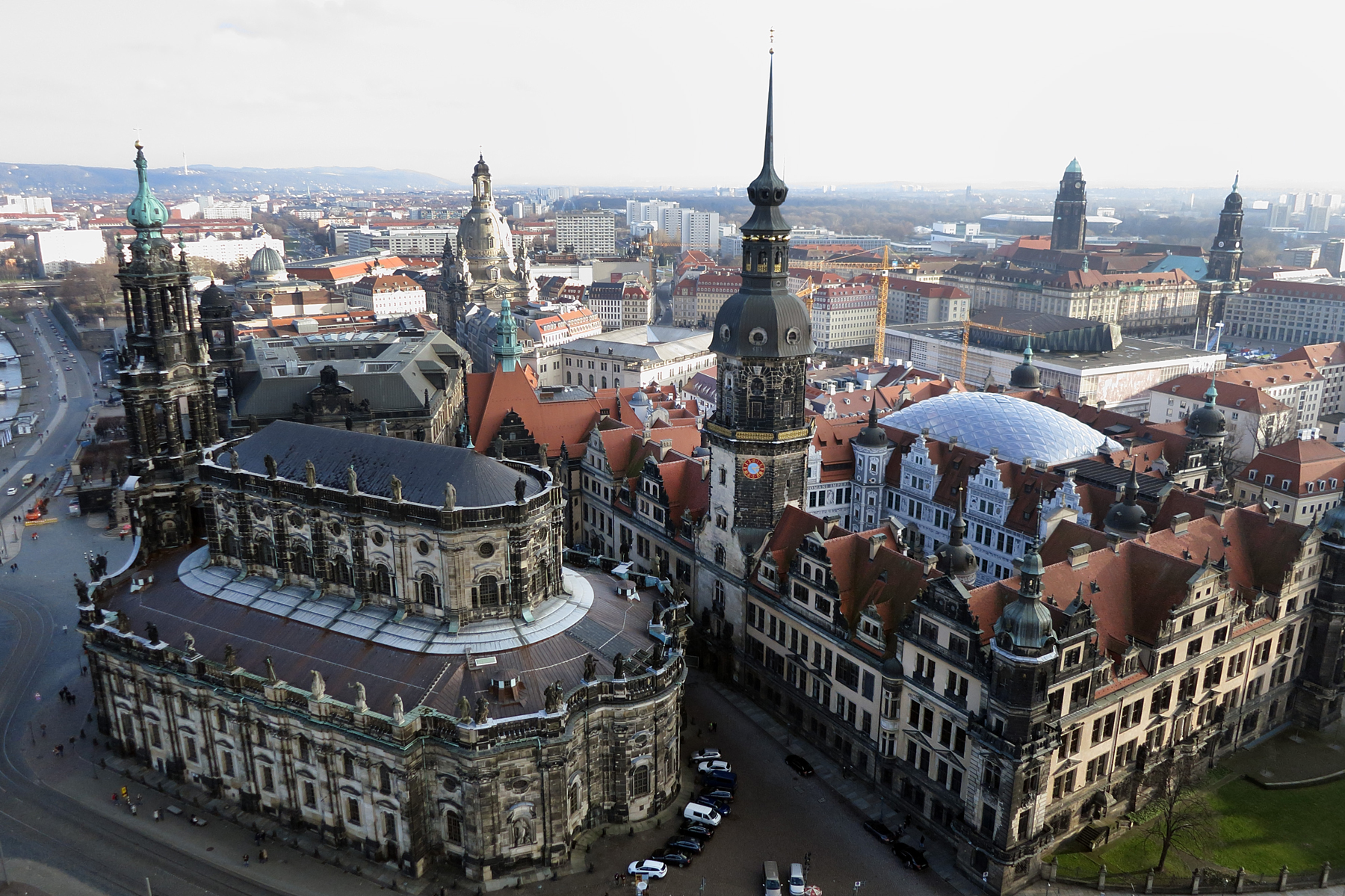
I walk among these iconic buildings when I arrive in Dresden on February 11, the first day of commemorations. There are helicopters in the air and hullabaloo on the streets. Slipping around a group of police, I join what appeared to be an antifascist block party. A brass band is playing, while rainbow flags and antifa banners billow in the wind. People young and old stay warm by drinking coffee, tea and punch from the nearby kiosk. Right at the front, beside the cordoned-off street, stands a group of old women with a sign reading, “Omas Gegen Rechts,” — Grannies versus the (far) Right. I observe a few gruff middle-aged people, all alone, many small groups of fashionable 20-somethings and five or six clusters of rather hard-looking antifa, all dressed in black and with face masks, including one bloke with a hoodie that boasts of “German Punk Terror Since 1990.” A few people arrive dressed as sparkly unicorns. It is, to put things mildly, a difficult crowd to get a read on. Sensing my confusion, somebody turns to me and says: “We’re waiting for the Nazis.”
After an hour they arrive, on the other side of a police cordon. Most are dressed in black. They carry banners that read “Dresden 1945: Unforgotten” and “350,000 Europeans murdered.” A float goes past playing Vivaldi, with a sign in a Gothic-style font that reads: “That they do not lie in their graves in vain // is solely up to our will // our actions.” There seems to be about a thousand of them. Some wave black flags. I think I can make out a snatch of the “Horst-Wessel-Lied,” the anthem of the Nazi party. A rumor spreads that the police have been confiscating sap gloves.
Here, on the counter-protest side, somebody is handing out whistles. Doja Cat’s “Boss Bitch” comes on over a loudspeaker, effectively drowning out Vivaldi. A number of chants go up: “There is no right to Nazi propaganda,” “Nazis piss off, nobody will miss you,” “German policemen are protecting the fascists.” Suddenly a 20-something with short pink hair and overalls surges to the front and shouts, in a strong Saxon accent: “Your kids are gonna be like us! Your kids are gonna be like us!” The rest of the crowd nearby joins in.
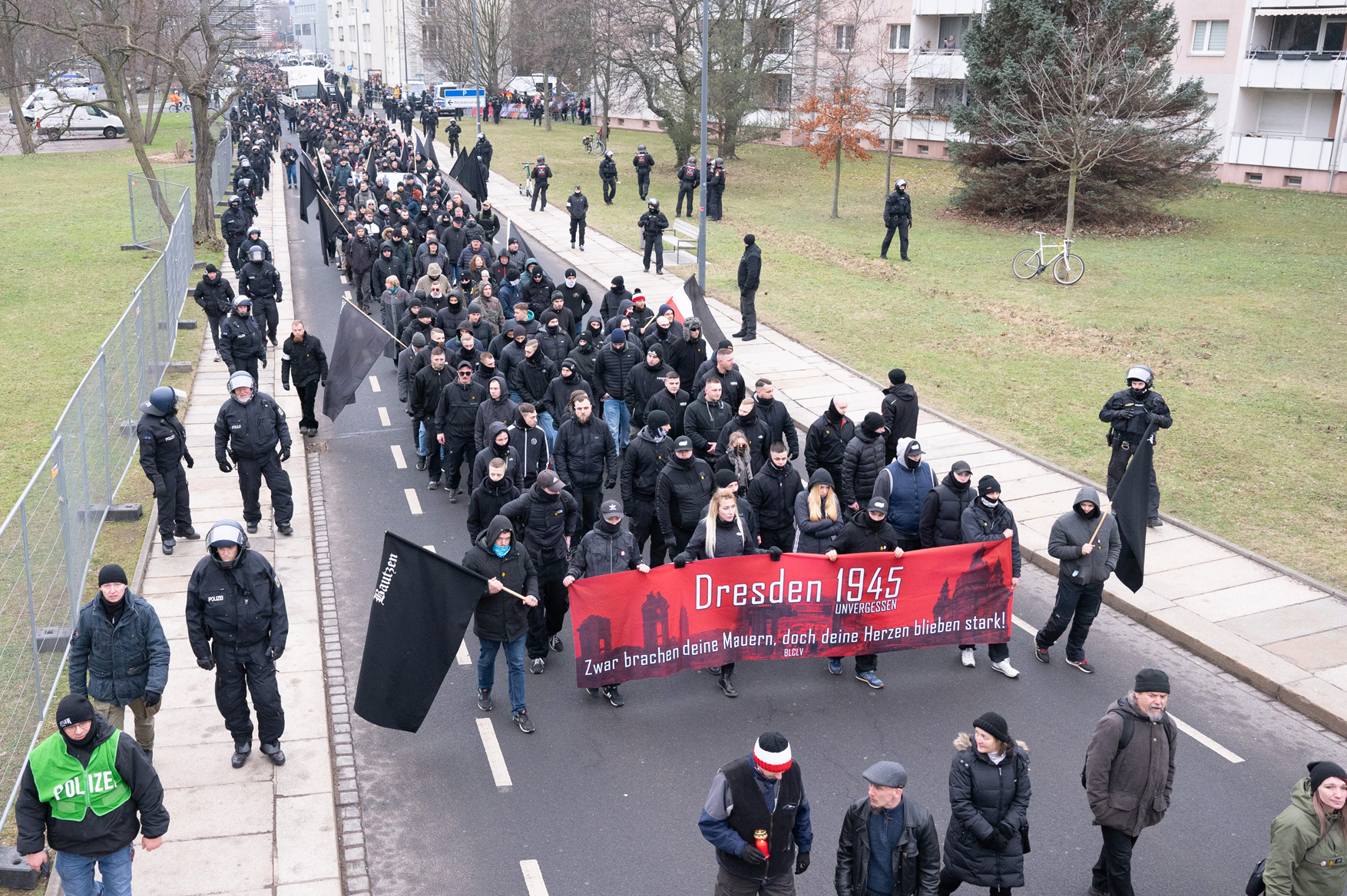

Afterwards, I meet up with Claudia Jerzak. A 43-year-old sociologist born and raised in Dresden, Jerzak has been documenting the far-right protests and counter-protests for over a decade — first for her Master’s degree on the topic and now for a doctorate she is completing part-time alongside her work as a researcher for an initiative on social work with refugees. She also co-wrote a 2012 film, “Come Together,” about Dresden’s contested memory culture. In her writing, Jerzak is critical of the city’s “silent commemoration” policy, which she believes has too easily tolerated the presence of far-right groups and obstructed any discussion of Dresden’s own perpetrator past.
Jerzak wants to explain everything — she has the enthusiasm and eye for detail of a city tour guide — but on this day she has to rush off to see where the far-right demonstration ends up. We agree to meet again later. Before I let her go, I want to ask her a personal question. How does it feel, as a Dresdener, to see your hometown transformed at least once every year into a political battleground of international interest, a place where various factions squabble over the legacy of a long-past local wound? She gives an ironic laugh. “It’s exhausting,” she says, and then she’s gone.
“We’re worried about what’s going to happen,” said Michael Hurshell, the vice president of the Jewish Community of Dresden. February 13 is a difficult day for the community every year, he explained. “We tell our community members that maybe this isn’t the best day to be out and about in the inner city.’”
Hurshell, an American conductor and orchestra leader born in Vienna but educated in the U.S, moved to Dresden in 2002. Since 2020, he has led this Jewish community of some 700, a majority of whom are Russian speakers from Ukraine. When we met, he invited me to the ostentatious Cafe im Coselpalais, which is housed in a complex that Augustus the Strong built for his mistress. When I arrived, he asked if I had come to report on neo-Nazi protests. That, I said, but also the whole range of rituals and memorials around February 13, the diversity and enthusiasm of which surprised me. “Well,” he said, with a wry smile. “That’s Dresden.”
The city’s Jewish community is based in the New Synagogue, a blocky Modernist building erected on the site of the old synagogue, which was destroyed on Kristallnacht in 1938. It is currently locked behind a fence, undergoing safety upgrades, recommended by the German authorities after a synagogue shooting elsewhere, that may last for up to two years.
Hurshell described the bombings as a “terrible, terrible act of suffering,” but took issue with the myth of victimhood some Dresdeners have adopted on the topic — which the far right has instrumentalized. Only recently did Hurshell learn that Dresden enthusiastically supported the Nazi regime, being among the first cities to engage in public book burnings. “And when it comes to the question of whether bombing Dresden was merely an act of reprisal, with no military significance,” he added, “the Jewish community likes to remind people that a number of our members are only alive because of the bombings.” Hurshell’s late friend Hans-Joachim Aris was one of these people: He and his sister were scheduled to be on a transport headed east days later when the Allied attack saved both of their lives.
A far-right party in 2004 won almost 10% of the vote in a Saxon state parliament election. Hurshell and his Jewish friends got together to discuss what to do: “Does this mean it’s time to get out of here?” Hurshell remembers how, in one of those early years, the far-right demonstrations around February 13 brought people from all across Germany for a march that was scheduled to go over the Carola Bridge and right past the synagogue on its way into town. Dresden’s city government insisted that it could not prevent a legally registered demonstration. Jewish community members had decided to stand in front of the synagogue arm in arm, following the progress of the oncoming far-right march by observing the police helicopters overhead. But the march never made it to the synagogue because a huge crowd of Dresdeners had come to the bridge and simply sat down, even though it was illegal to block a registered demonstration. “And that impressed me. It was an act of solidarity with us, which I hadn’t expected, and it was one of the reasons those demonstrations eventually petered out” Hurshell said. He, of course, decided to stay.
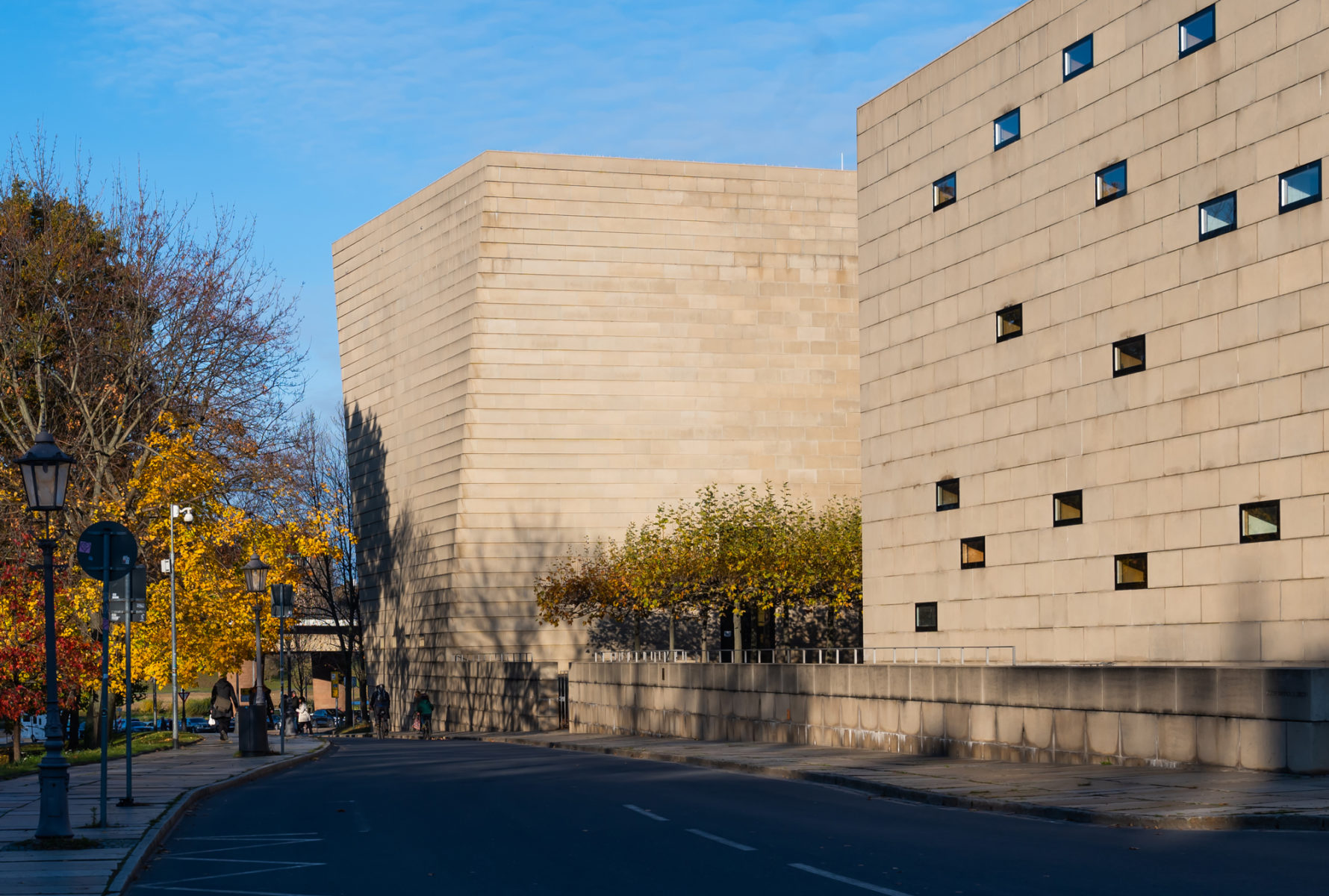
On February 13, 2023, I find myself losing my bearings. What I had expected, in Dresden, was a memory war with two sides: the far right against civil society and the leftists. Instead, as I enter town in the early afternoon, a vast spectrum of arguments and performances are taking place across the city.
At one square, there is a huge “peace” demonstration where several Russian flags are flown. One sign at this protest compares the vice-chancellor Robert Habeck’s call for an “economic war” against Russia to the “total war” of Josef Goebbels. Down by the Kreuzkirche, one of Dresden’s two main churches, there is a memorial plaque for the victims of the Holocaust. By the time I arrive there, seven women are holding a vigil. They are part of the Dresden chapter of the Omas Gegen Rechts (Grannies against the Right), which has been holding vigil at the site since 10 a.m.
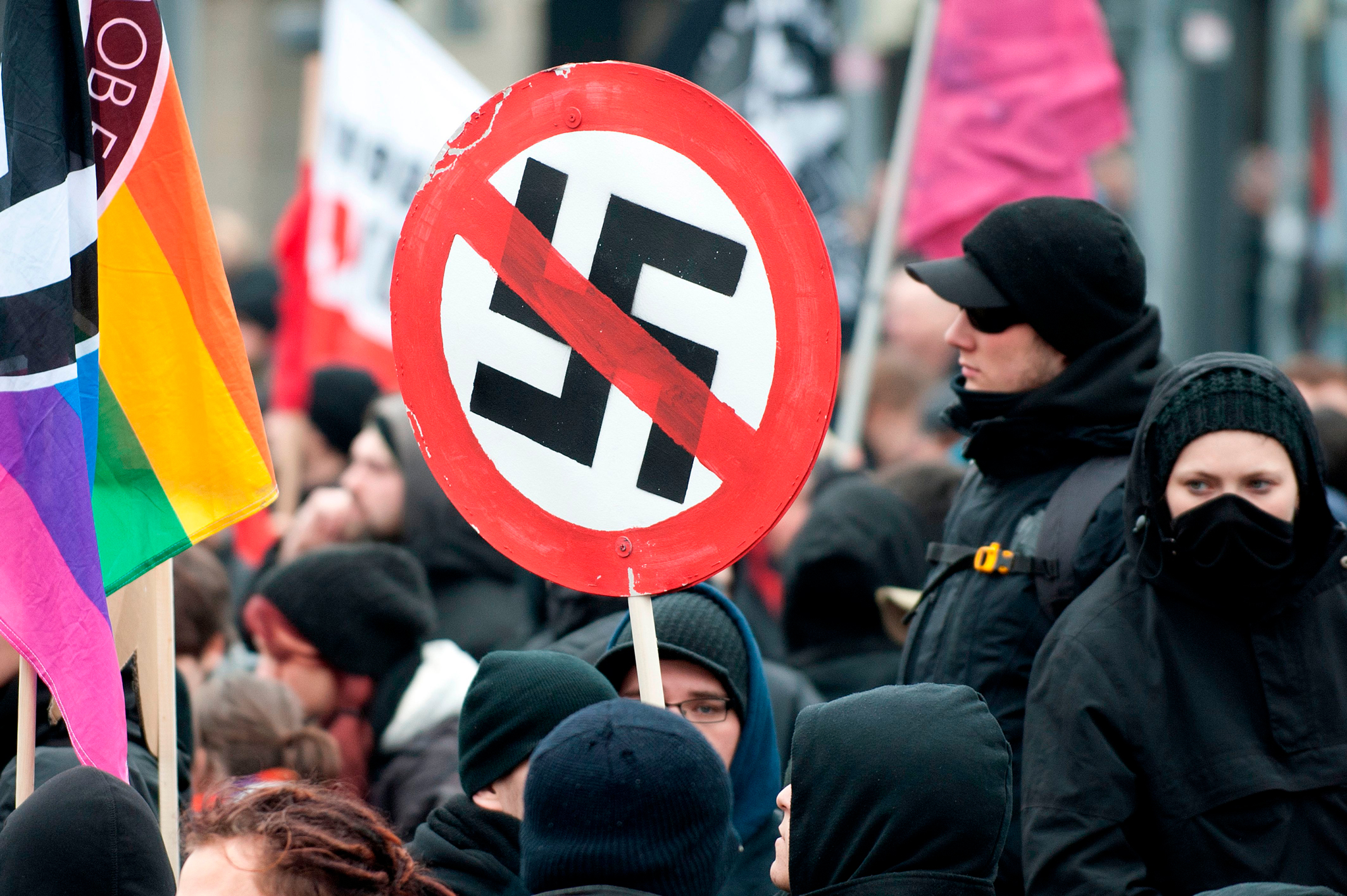
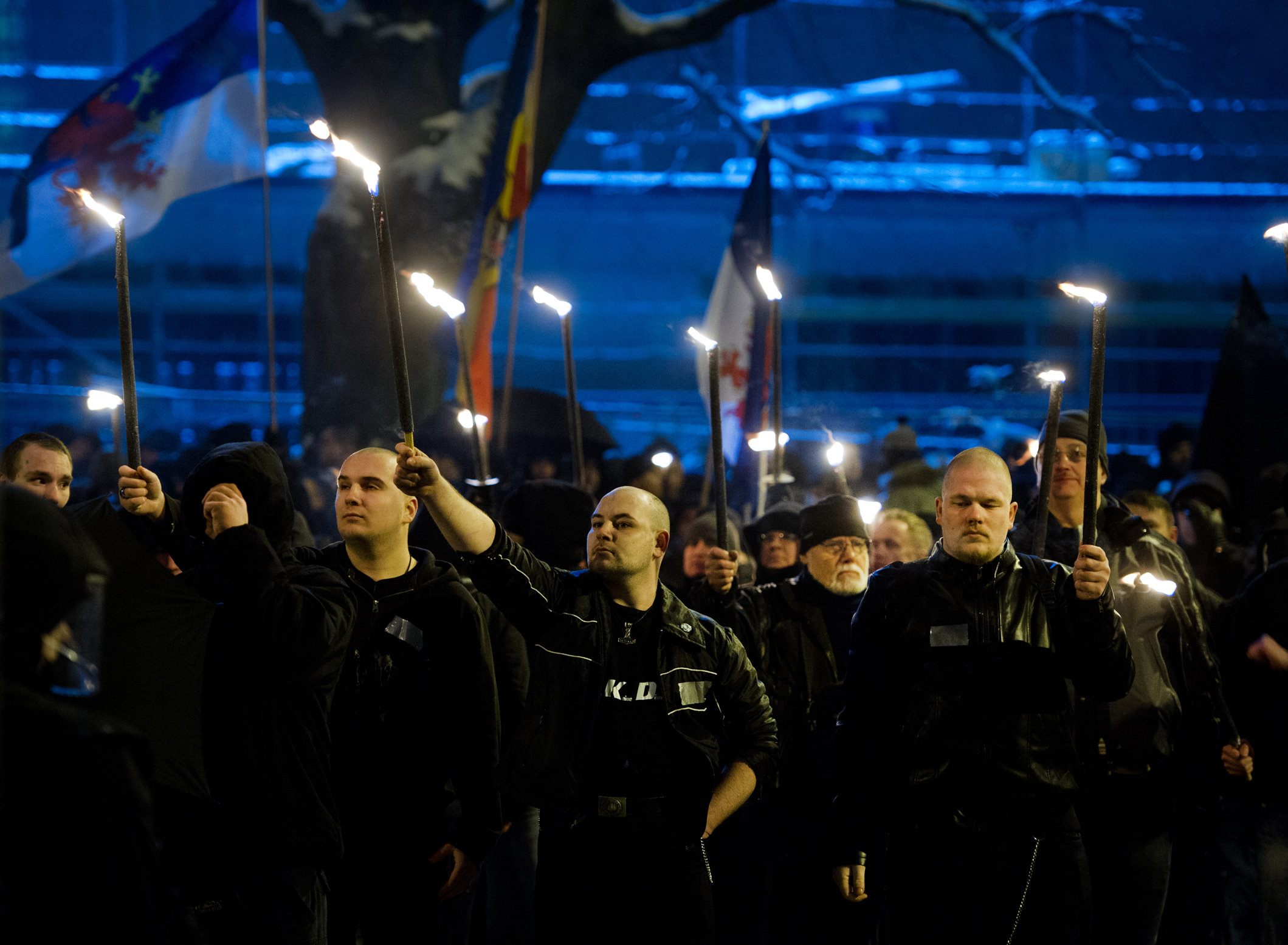
This year, the Omas Gegen Rechts demonstrators are carrying a banner that reads: “For peace, against violence and war everywhere.” “We are against war,” explains Helga, a long-time Dresdener. I ask if they are saying they oppose Germany delivering tanks to Ukraine. “Well,” Helga hesitates, “we don’t all agree about that.” At the mention of Ukraine, one or two other Omas look over. Helga explains that they often argue about the situation — but always in a respectful manner. A fellow Oma, Christine Weimann, admits that, while her pacifist beliefs are unwavering, she has found herself uncertain in this instance. “I think it’s good that we’re always in conversation,” she adds. “And I wish our group did even more of it, because people need to stay in conversation and not divide people up into pigeon holes. It’s our only chance.”
I meet again with Claudia Jerzak, who has agreed to show me some memorial activities around the city. She describes Dresden on February 13 as a turbulent public stage for memory culture — a big meet-and-greet, almost, for the city and its histories. Dresden, in Jerzak’s view, generally lacks an earnest and thorough engagement with its past. The anniversary offers an opportunity to change that, and the “friction,” she says, is part of the process.
Up at the Neumarkt, the human chain is about to form. Dresden’s mayor and the rector of its main university give speeches about the importance of friendship, peace and solidarity, rejecting outright any switching of the victim and perpetrator roles. When the bells ring out at 6 p.m., people get into position and begin linking arms.
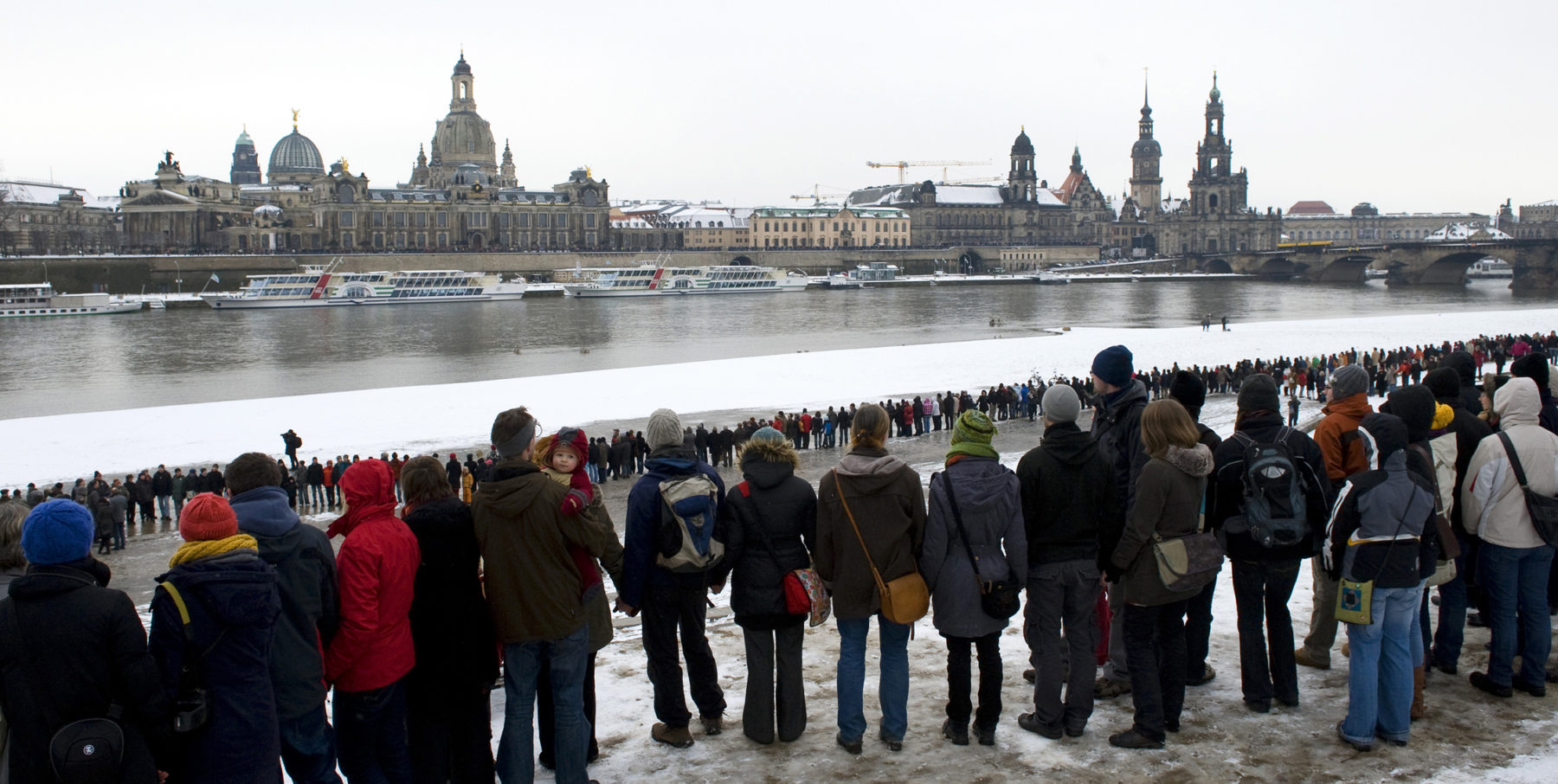
I ask Jerzak if she ever joins in. She says no. “If the idea is to protect the city, then why are we just protecting the historical buildings downtown — wouldn’t it be more valuable to protect the values of the city everywhere, to protect its vulnerable citizens and people of color, on this day and throughout the year?”
Jerzak leads me to a different square, a few blocks south and east, to show me some more explicitly political public memory activities. Here, a far-right rally is expected to arrive in the next hour or so. Since this year’s anniversary falls on a Monday, the “mourning march” has combined with the regular weekly Querdenker protests that lean more Covid-skeptic, libertarian and respectably suburban than the hardcore-looking cadres from Saturday. What is happening now is a counter-demonstration, a Gegendemo, designed to block far-right actors from marching into downtown Dresden. Once again, we are listening to a brass band.
Jerzak gets cold and heads home, while I follow the action to the decidedly un-baroque Pirnaischer Platz. Here a number of anti-right Gegendemos have combined to blockade the rally. The police presence is heavy, with some officers moving through the Gegendemo trying to find someone with whom they can negotiate a withdrawal.
The withdrawal doesn’t happen, and suddenly the far-right demonstration arrives, separated by a long line of police vans. Unlike Saturday’s solemn procession, this group seems upfront about its desire to provoke. Because the police are now rerouting them, they each have a turn to face the Gegendemo crowd before turning down Saint Petersburg Street. Many of them point and laugh, while others mock-conduct antifa chants. Almost everyone takes a selfie. Some hold up peace flags and commemorative candles — a surreal act of coded provocation.
Later I learned that the blockade went down as a success. The far-right march was rerouted, and its estimated 500 to 1,000 attendees were outnumbered more than two to one by the counter-protesters. The arithmetic stays with me for a long time. If you include the reported 10,000 people in the human chain — plus all the other various community events — then February 13 has, per capita, been a day overwhelmingly defined by resistance to the pull of German victimhood and xenophobia. What the far right has triggered is a very public process of self-clarification for the city: Every year, every February, where do we stand? It must be utterly exhausting, and not just for Claudia Jerzak, but at least it gets everything out into the open.
Back at the Neumarkt, the human chain has ended and people are milling about. The last official event for the day is Nacht der Stille, “the Night of Silence,” to be held in the basement of the Frauenkirche from 10 p.m. onwards. I join the crowds filing in.
“Wars,” says the Frauenkirche’s pastor, Angelika Behnke, “do not begin or end with bombs.” Instead, she intones, they find their roots in envy, resentment and arrogance. Behnke somberly describes how the Frauenkirche collapsed in 1945 from the damage it sustained during the bombing. Yet with the memory of destruction comes hope, she continues: “We cannot do anything about what happened back then, but we can look around at what is happening today.”
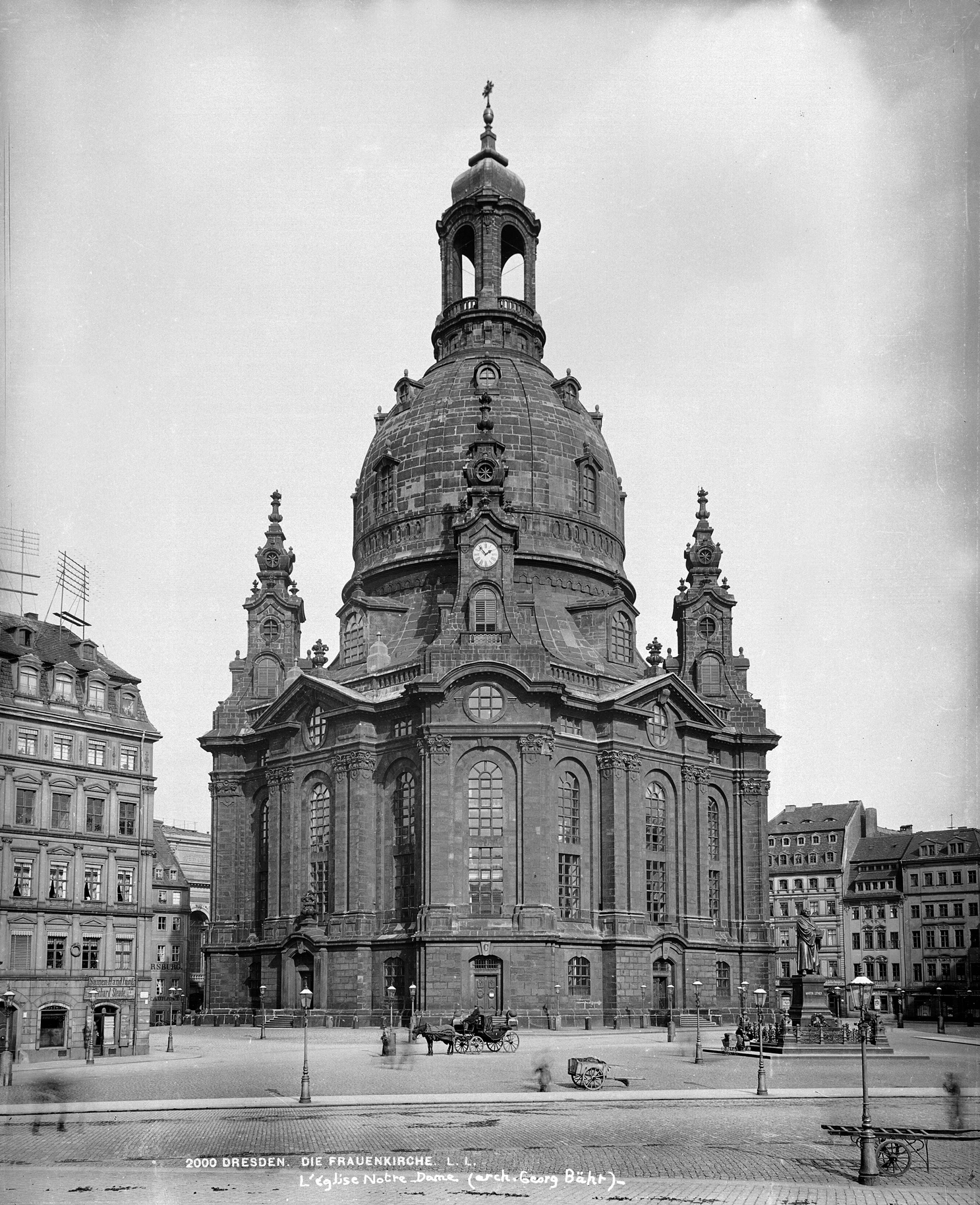
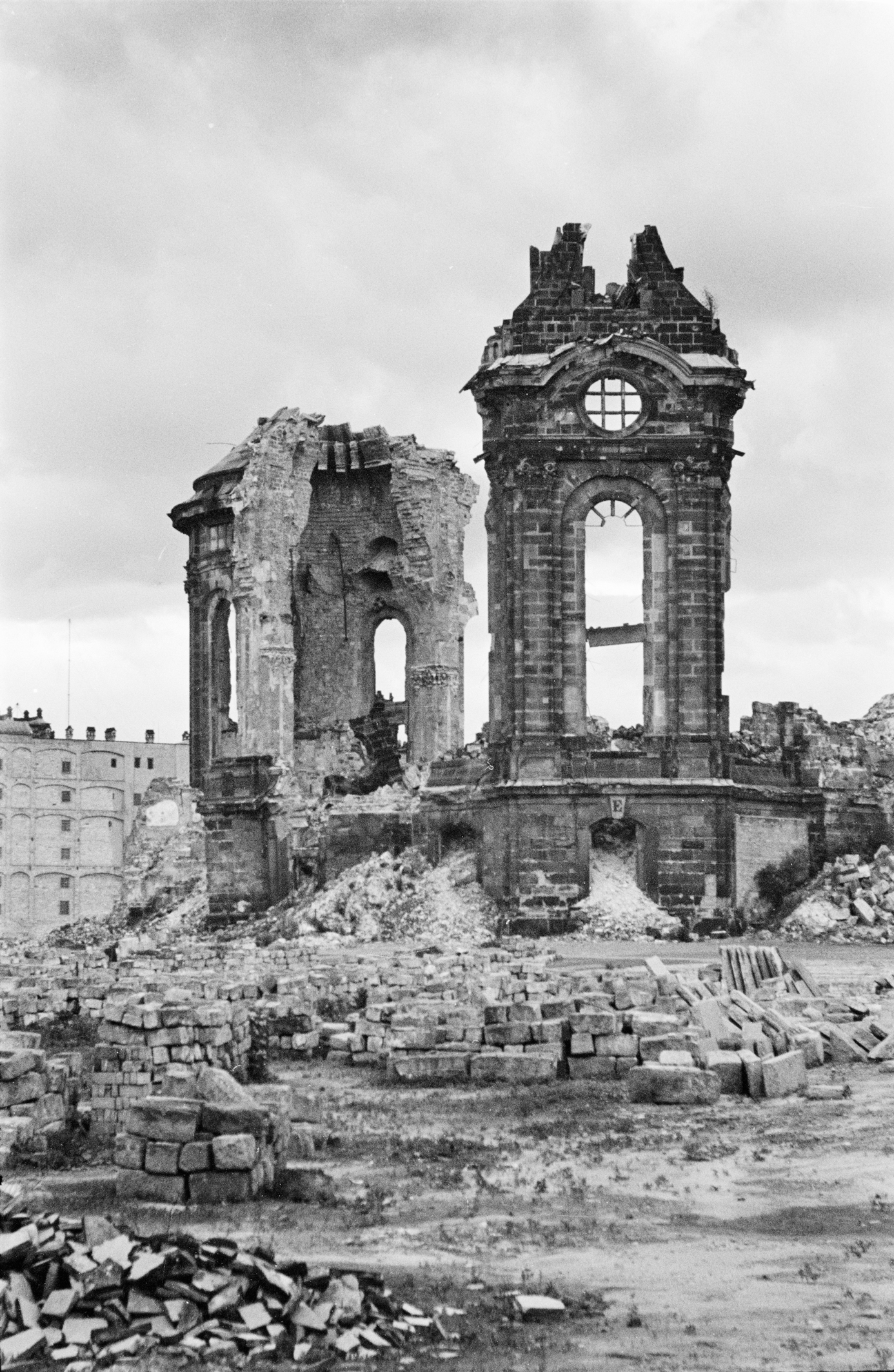
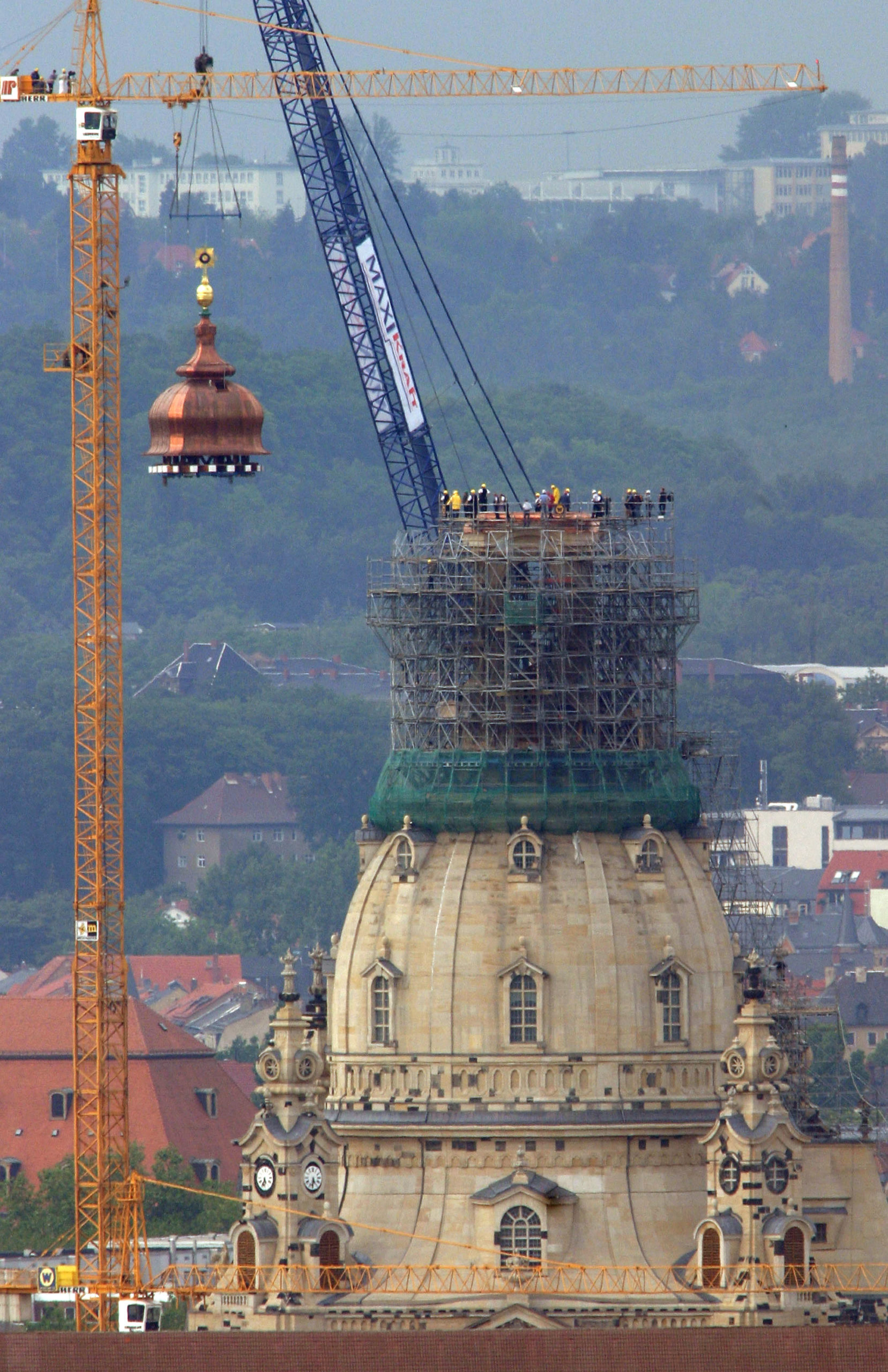
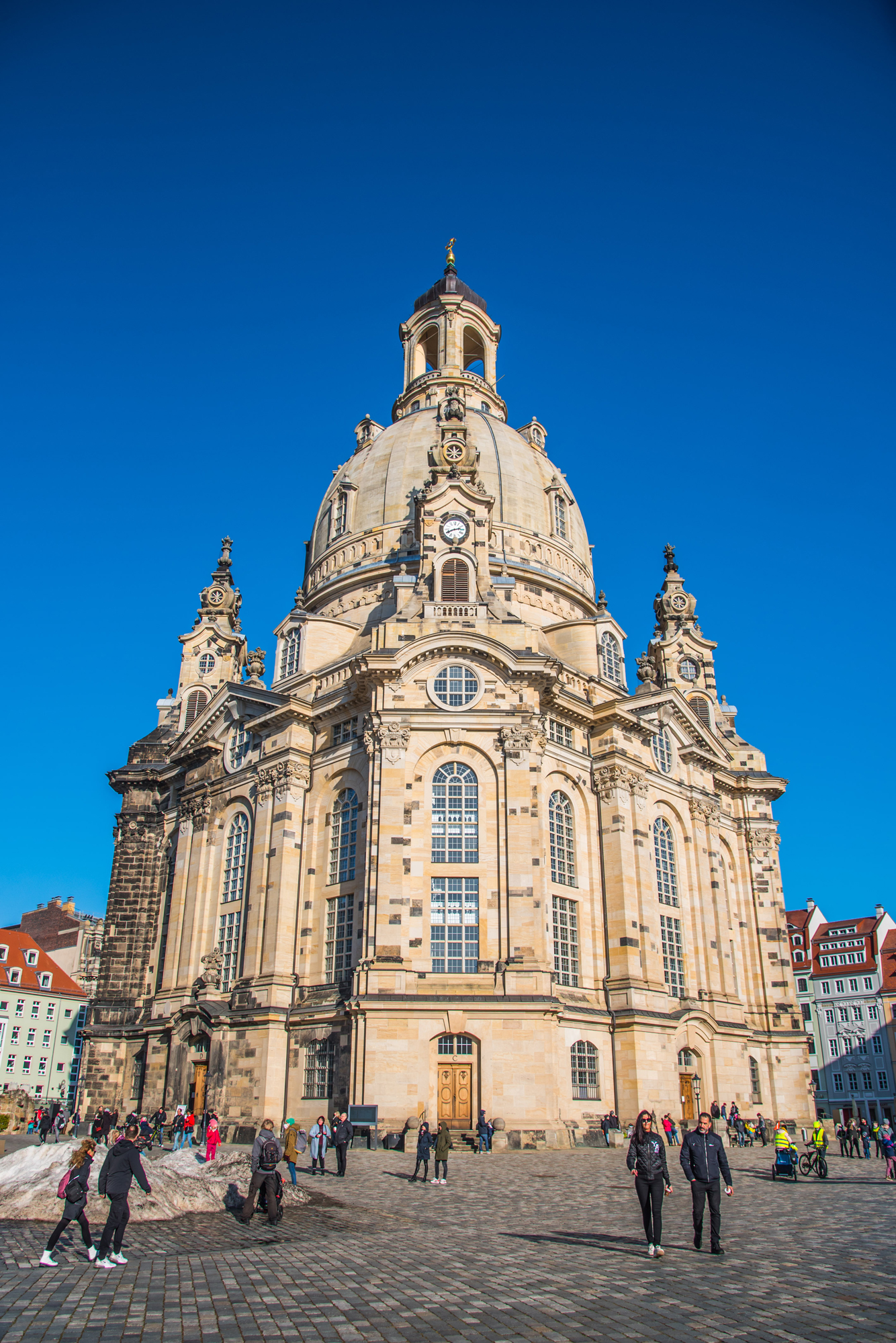
For the rest of the evening, interspersed with music, a series of Dresdeners give short speeches about what they are lighting a candle for. We hear from the Jewish Community of Dresden’s Michael Hurshell and then from a Ukrainian-born Dresdener, a young woman from Iran and a Russian university student who opposes the war. The shift in context is surprising, but I begin to see its logic. If Dresden is now an open, multicultural city — if Dresdeners, now, bring with them a whole diverse array of remembered wartime suffering — then surely it’s not just the Dresden of 1945 that belongs to the city’s memorial duties but also 1938’s Kristallnacht, and 2022’s Ukraine.
The same goes for Syria in 2015, when its civil war changed the population of Germany, much to the ire of the far right. In 2017, Damascus-born Dresden artist Manaf Halbouni installed three upturned buses in front of the Frauenkirche, a visual homage to Aleppo civilians’ use of city buses as protective barricades during the Syrian civil war. Right-wing activists responded with outrage, but Halbouni, when we spoke on the phone, said that he was simply building a bridge between two destroyed cities, only one of which had yet had the chance to build back up. As to whether he might be accused of taking the date out of context, of instrumentalizing it to his ends, he replied sharply: “You could accuse anyone of that. Everyone is always instrumentalizing this day.”
When I depart Dresden the following day, I find myself thinking about what purpose memory culture serves. Even the best public monuments run the risk of growing stale, assuming as they do that everyone is on the same page. This anniversary, by contrast, sets the whole thing in motion. It demands a constant trying-out of new contexts and connotations. When the far right wanted to turn the city into a one-dimensional symbol of suffering, Dresdeners have responded with an ongoing public renegotiation of their history — a rowdy play of the past and the present against their ornate, Baroque stage.
At the very least, they’re having arguments. As my train pulls away, one particular image from the anniversaries stands out. It is 9:45 p.m. on a Monday night, the town square is filled with people and two old men are simply standing there and arguing — arguing about Russia, arguing about the bombings, arguing about their city and about what should be done.
The story you just read is a small piece of a complex and an ever-changing storyline that Coda covers relentlessly and with singular focus. But we can’t do it without your help. Show your support for journalism that stays on the story by becoming a member today. Coda Story is a 501(c)3 U.S. non-profit. Your contribution to Coda Story is tax deductible.





